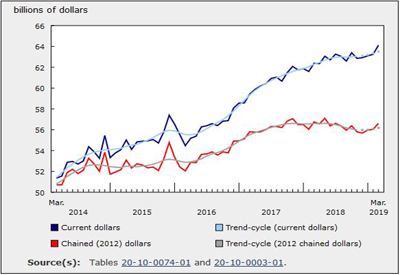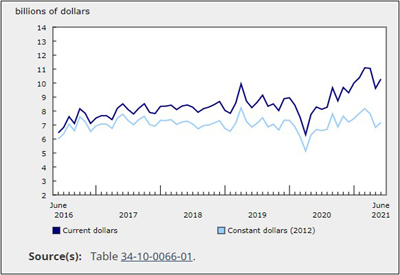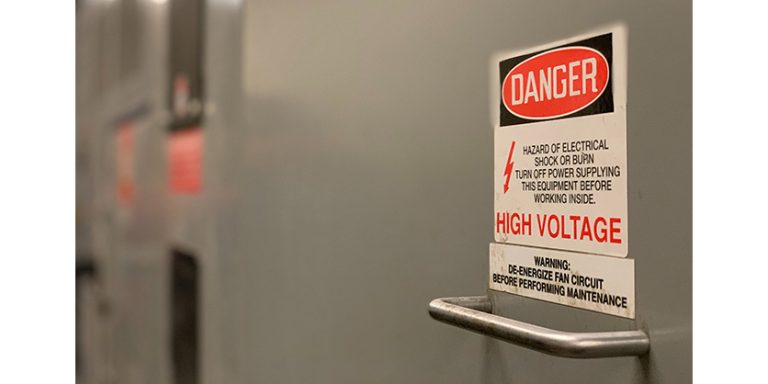Wholesale Sales Rose 1.4% in March

May 25, 2019
Wholesale sales rose for the fourth consecutive month, up 1.4% to $64.1 billion in March. Higher sales were recorded in six subsectors, accounting for 82% of total wholesale sales. The motor vehicle and motor vehicle parts and accessories subsector was the lone subsector to decline. Excluding this subsector, wholesale sales were up 2.2% in March.
On a quarterly basis, wholesale sales increased 0.7% in the first quarter, on the strength of higher sales in the motor vehicle and motor vehicle parts and accessories subsector in February.
In volume terms, wholesale sales increased 1.0% from February to March.
The building material and supplies and the machinery, equipment and supplies subsectors lead gains in March
Following a 5.0% decline in February, the building material and supplies subsector was up 4.5% to $9.0 billion in March on the strength of higher sales in the lumber, millwork, hardware and other building supplies (+6.7% to $4.3 billion) and the electrical, plumbing, heating and air-conditioning equipment and supplies (+5.3% to $2.9 billion) industries. Exports of lumber and other sawmill and millwork products were up 5.2% in March. In volume terms, sales in this subsector increased 3.8%. In the first quarter, sales in this subsector declined 1.5%, the third consecutive quarterly decline.
In dollar terms, the machinery, equipment and supplies subsector reported the second largest increase in March (+2.9% to $13.5 billion), more than offsetting a 1.8% decline in February. Higher sales in the construction, forestry, mining, and industrial machinery, equipment and supplies (+5.7% to $4.3 billion) and the computer and communications equipment and supplies (+5.4% to $4.3 billion) industries contributed the most to the gain. On a quarterly basis, this subsector was up 0.2%, the sixth consecutive quarterly increase.
Sales in the motor vehicle and motor vehicle parts and accessories subsector decreased 2.0% to $11.3 billion as all three industries declined in March. Lower sales in the motor vehicle and parts industry (-2.0% to $9.0 billion) contributed the most to the decrease. On a quarterly basis, following four consecutive quarterly declines, sales in this subsector rose 5.3% in the first quarter, due to higher sales (+9.3% to a record $11.6 billion) in February.
Higher sales in eight provinces
Wholesale sales rose in eight provinces in March, which together represented 48% of total wholesale sales in Canada. Alberta posted the highest increase in sales, followed by British Columbia, Manitoba and Quebec.
Following three consecutive monthly declines, sales in Alberta increased 4.6% to $6.7 billion in March. Sales were up in six of seven subsectors, led by the machinery, equipment and supplies (+5.9%) and the miscellaneous (+8.4%) subsectors.
In British Columbia, sales increased for the first time in 2019, up 2.9% to $6.4 billion in March. Five of seven subsectors recorded gains in March, with the building, materials and supplies (+6.5%) and the machinery, equipment and supplies (+6.3%) subsectors contributing the most.
Sales in Manitoba rose 10.9% to $1.8 billion in March with five subsectors reporting higher sales, including the miscellaneous (+28.7%), the building material and supplies (+17.8%) and the machinery, equipment and supplies (+10.8%) subsectors.
In Quebec, sales rose 1.3% to $11.8 billion, with higher sales in five of seven subsectors. The personal and household goods (+3.4%) and the building material and supplies (+3.1%) subsectors contributed the most to the gain in March.
Sales in Ontario edged down 0.1% to $33.0 billion in March. Lower sales in the motor vehicle and motor vehicle parts and accessories (-2.0%), the miscellaneous (-1.7%) and the food, beverage and tobacco (-0.4%) subsectors more than offset higher sales elsewhere.
In the first quarter, seven provinces recorded higher sales, led by Ontario, which increased 1.3% from the fourth quarter of 2018. Meanwhile, Alberta (-1.9%) posted the largest quarter-over-quarter decline, followed by British Columbia (-1.3%).
Inventories rise in March
Wholesale inventories increased for the seventh consecutive month, up 0.4% to $90.0 billion in March. Gains were recorded in four of seven subsectors, which together represented 73% of total wholesale inventories.
Inventories in the machinery, equipment and supplies subsector increased for the second consecutive month, up 1.2% to $26.3 billion, led by the construction, forestry, mining, and industrial machinery, equipment and supplies industry (+2.0%).
In the personal and household goods subsector, inventories rose for the fourth consecutive month, up 2.1% to $15.4 billion in March. Higher inventories were recorded in three of six industries.
Following two consecutive monthly increases, inventories in the motor vehicle and motor vehicle parts and accessories subsector declined 2.5% to $12.6 billion in March. The new motor vehicle parts and accessories industry (-5.3%) contributed the most to the decline.
Inventories in the miscellaneous subsector decreased for a second time in three months, down 0.8% to $11.2 billion. The paper, paper product and disposable plastic product (-6.0%) and the agricultural supplies (-0.7%) industries led the decline.
The inventory-to-sales ratio decreased from 1.42 in February to 1.40 in March. This ratio is a measure of the time in months required to exhaust inventories if sales were to remain at their current level.
Source: Statistics Canada, https://www150.statcan.gc.ca/n1/daily-quotidien/190523/dq190523a-eng.htm










